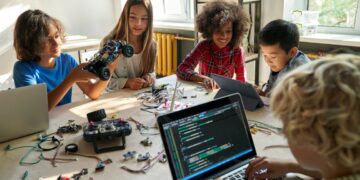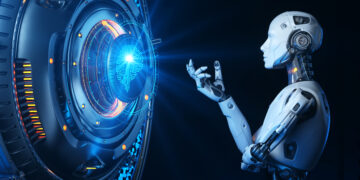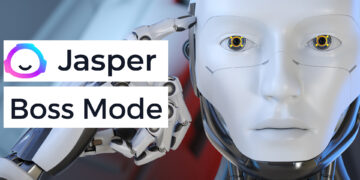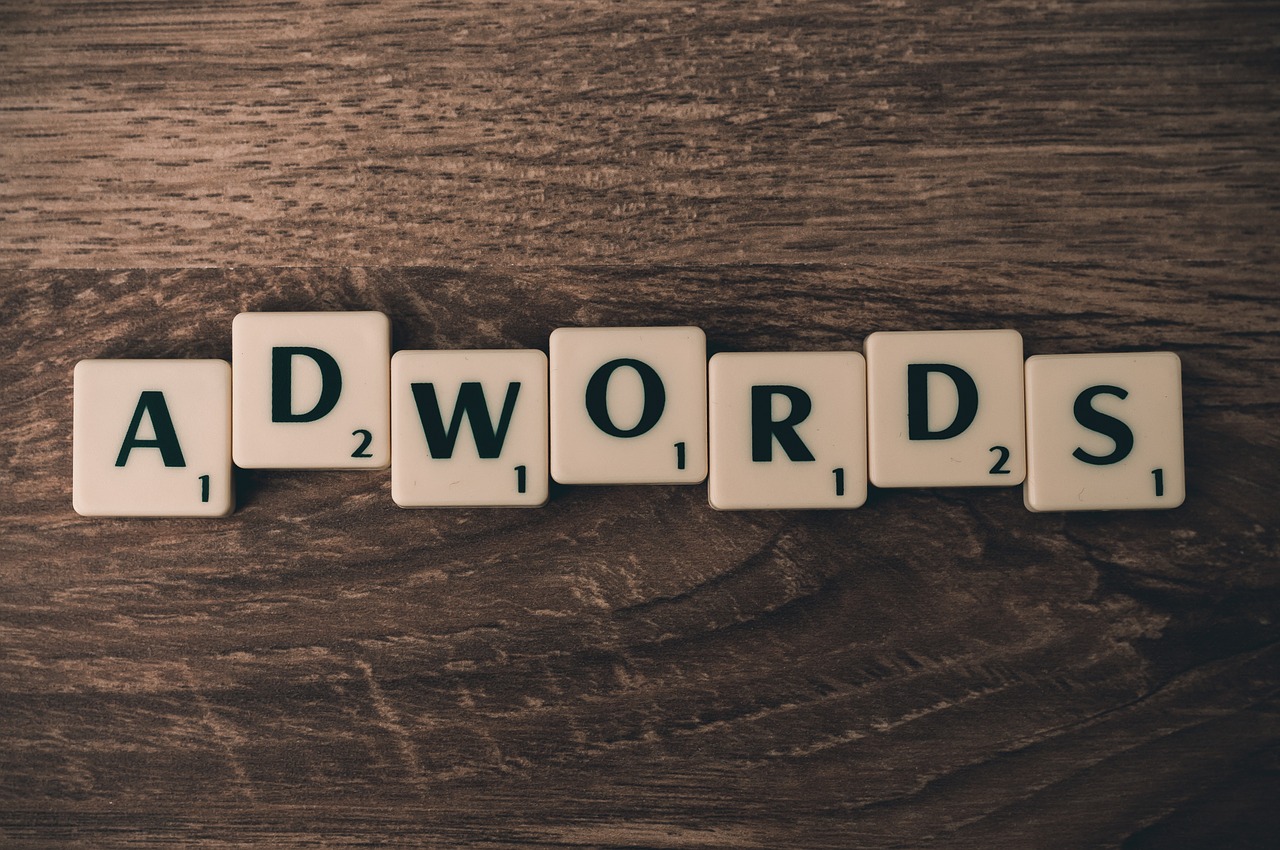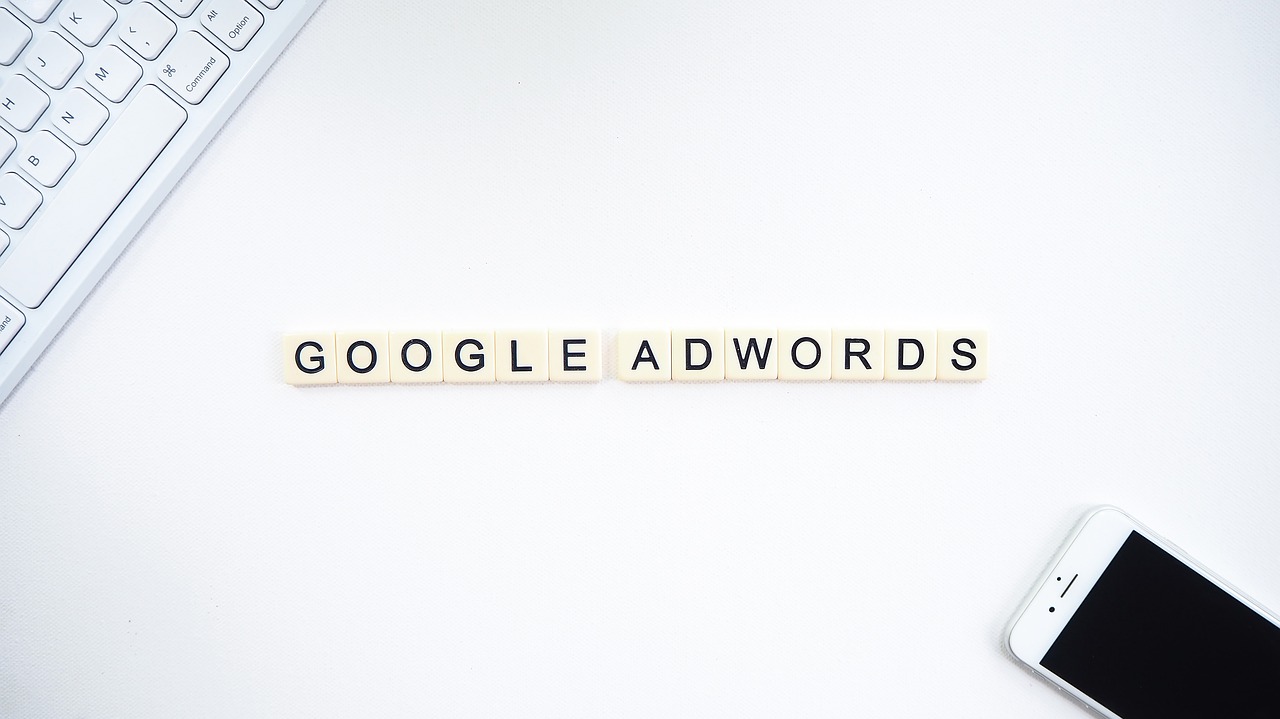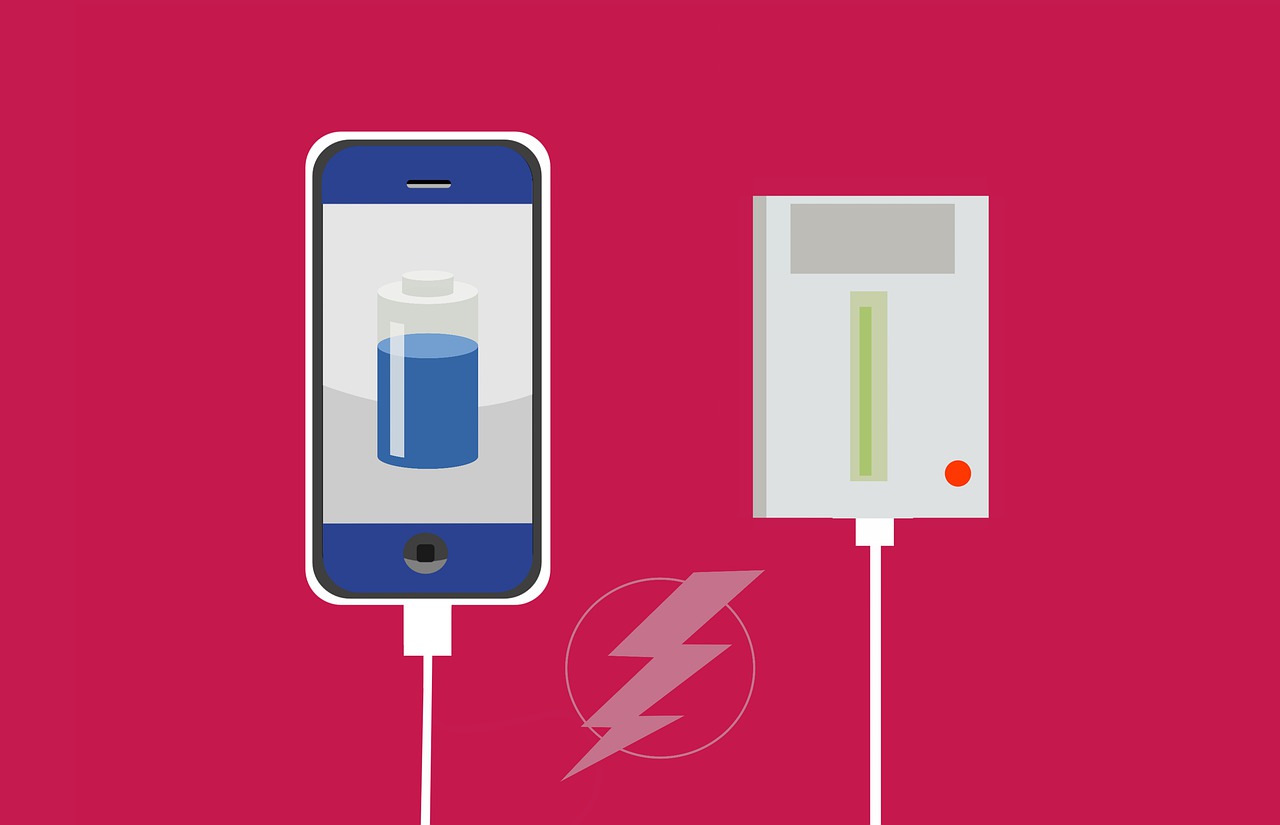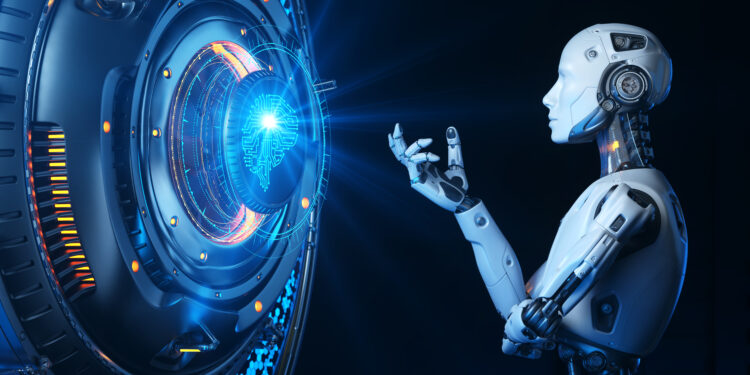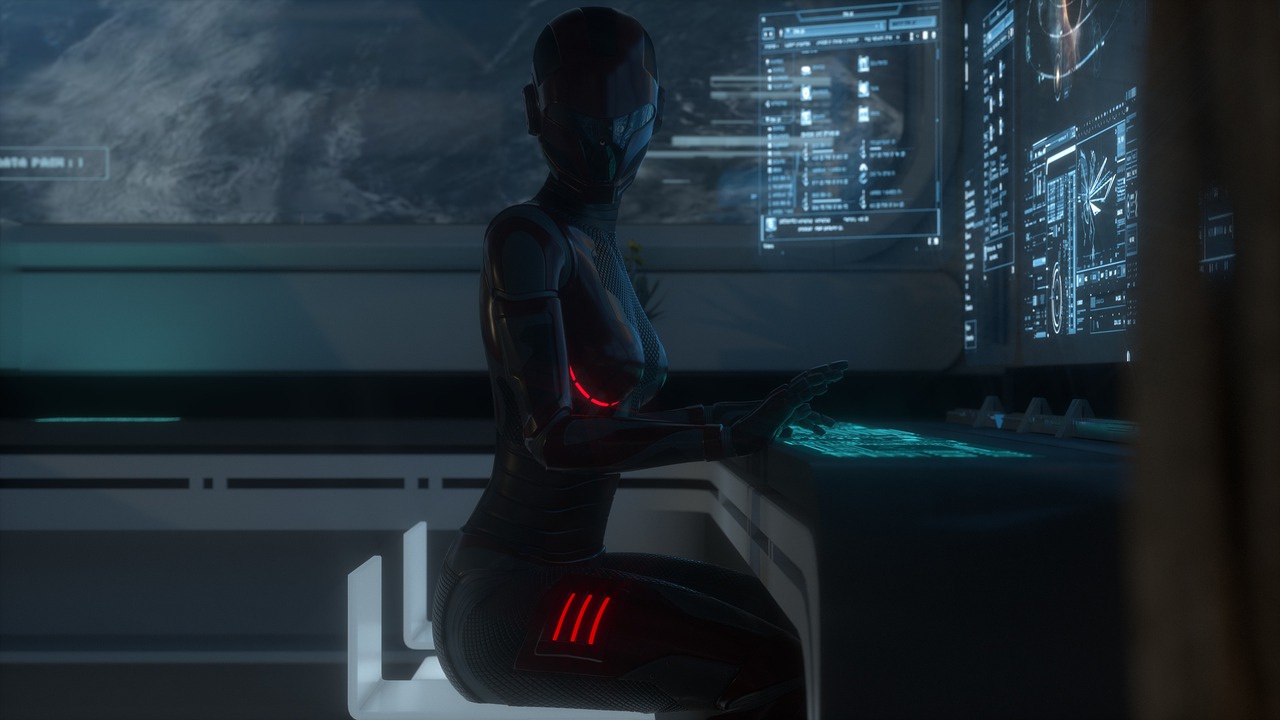Contents
- 1 How AI Is Changing The Landscape Of Art
- 2 The Potential Of AI In Art
- 3 The Advantages Of AI In Art
- 4 The Disadvantages Of AI In Art
- 5 How AI Is Impacting The Future Of Art
- 6 The Role Of AI In The Future Of Art
- 7 What AI Can Do For Artists
- 8 How AI Is Changing The Way We Perceive Art
- 9 The Potential Of AI In The Art World
- 10 How AI Is Impacting The Future Of The Art World
- 11 The Role Of AI In The Future Of The Art World
- 12 What AI Can Do For The Art World
- 13 FAQ
- 14 Summary
How AI Is Changing The Landscape Of Art
In recent years, there has been a growing interest in the role of artificial intelligence (AI) in the field of art. This is due to the increasing capabilities of AI technology, which has led to new opportunities for creating and manipulating art.
One of the most significant ways that AI is changing the landscape of art is through the development of new tools and techniques for creating and manipulating images. For example, AI can now be used to generate realistic images from scratch, as well as to modify existing images in order to create new ones. This has led to a whole new genre of AI-generated art, which is often referred to as “deep learning art.”
Another way that AI is changing the landscape of art is through its impact on the way we interact with art. For instance, AI can now be used to create interactive experiences that respond to our emotions and movements. This is leading to a new form of “immersive” art that allows us to experience art in a completely new way.
Overall, it is clear that AI is having a profound impact on the world of art. As AI technology continues to develop, we can expect even more exciting and innovative changes in the field of art. (283)
The Potential Of AI In Art
The potential of AI in art is vast and varied. From creating realistic images and simulations to helping artists with the creative process, AI has the potential to revolutionize the art world.
One of the most exciting potential applications of AI in art is its ability to create realistic images and simulations. Using algorithms, AI can generate images that are indistinguishable from real-world photographs. This technology is already being used by some artists to create “hyper-realistic” portraits and landscapes. As AI continues to develop, it is likely that this application will become even more sophisticated, allowing artists to create even more realistic images.
Another potential application of AI in art is its ability to help artists with the creative process. By analyzing an artist’s previous work, AI can provide insights that might help them break through creative blocks. Additionally, AI can be used to generate new ideas for paintings, sculptures, or other works of art. Some artists are already using AI-generated ideas as a starting point for their own creative processes.
The potential applications of AI in art are nearly limitless. As AI continues to develop, we can only imagine what new and exciting ways it will be used by artists around the world. (280)
The Advantages Of AI In Art
The advantages of AI in art are many and varied. Perhaps the most obvious is that AI can create art that is realistic and photo-realistic, something that has been difficult for traditional artists to achieve. This is because AI can take into account all the tiny details that make up a scene or object, and recreate them perfectly. This means that AI-created art can be incredibly lifelike and realistic, making it very impressive to behold.
Another advantage of AI in art is that it can create art that is completely original and unique. Traditional artists often have to rely on their own imagination and creativity when creating new pieces, but AI is not limited by this in any way. Instead, AI can generate completely new and original artwork, which can be extremely exciting and innovative.
Finally, AI in art can also be used to create art that is interactive and responsive. For example, some AI-created paintings can change color or pattern based on the viewer’s movements or emotions. This means that viewers can have a completely unique experience when viewing AI-created art, which can be very engaging and immersive. (266)
The Disadvantages Of AI In Art
There are many disadvantages of AI in art. One is that it can create art that is too perfect and lacking in personality. Another disadvantage is that it can be used to create art that is plagiarized or copied from other sources. Additionally, AI can be used to create art that is racist, sexist, or offensive in other ways. Finally, AI-created art may not be able to stand the test of time like traditional art forms. (130)
How AI Is Impacting The Future Of Art
The impact of AI on the future of art is both immensely exciting and somewhat uncertain. On the one hand, AI presents a unique opportunity for artists to create completely new and original works of art that would not be possible without the use of artificial intelligence. On the other hand, it is unclear how AI will impact the traditional art world, and whether or not AI-created art will be accepted as legitimate by the mainstream art world.
There are a number of ways in which AI is already impacting the future of art. For example, AI can be used to create realistic 3D images and videos, which could be used to create virtual reality experiences or even entirely new forms of art. Additionally, AI can be used to generate new ideas for paintings, sculptures, or other pieces of artwork. In some cases, AI may even be able to create entire pieces of artwork on its own.
It is also worth noting that AI is not just limited to visual art. It can also be used to create music, poetry, and other forms of writing. Additionally, AI can be used to generate new ideas for stories or novels. In short, the possibilities are endless when it comes to the potential impact of AI on the future of art.
However, as with anything else, there are also some potential risks associated with the use of AI in the arts. For example, it is possible that AI could eventually replace human artists altogether. While this may seem like a far-fetched scenario, it is not outside the realm of possibility. Additionally, there is a risk that AI-created art could eventually become indistinguishable from traditional art, making it difficult for people to appreciate the unique qualities of each.
Overall, the impact of AI on the future of art is both exciting and uncertain. However, one thing is for sure – the use of artificial intelligence in the arts is sure to have a major impact on the way we create and experience art in the years to come. (435)
The Role Of AI In The Future Of Art
Artificial intelligence (AI) is increasingly being used to create or enhance artworks. While some people believe that AI will eventually replace human artists, others see it as a tool that can be used to augment human creativity.
There are many ways in which AI is being used to create or enhance art. One popular method is using AI to generate new images or videos based on a set of parameters provided by the artist. For example, an artist might use AI to generate a series of images that explore different color palettes.
Another way AI is being used in the art world is through the development of digital assistants that can help artists with various tasks such as image recognition, material selection, and 3D modeling. These digital assistants are becoming increasingly sophisticated and are able to understand and respond to the needs of the artist.
As AI continues to evolve, it is likely that we will see even more ways in which it can be used to create or enhance art. While some people may be concerned about the role of AI in the future of art, it is important to remember that AI is simply a tool that can be used to augment human creativity. (275)
What AI Can Do For Artists
Artists have always been at the forefront of new technology. They were some of the first to adopt photography in the 19th century, and more recently, they’ve been early adopters of digital technologies like computer-aided design (CAD) and 3D printing. So it’s no surprise that many artists are now turning to artificial intelligence (AI) as a way to create new artworks.
AI can be used in a number of ways to create art. One popular method is using AI algorithms to generate new images or patterns that can then be refined by the artist. This is often referred to as generative art, and it can produce some truly stunning results. For example, one artist used an AI algorithm to generate images of flowers that were then printed onto fabric. Another used AI to create abstract images that were turned into sculptures.
But AI can also be used in more traditional ways, such as helping an artist choose colors for a painting or suggesting new composition ideas. And as AI technology continues to develop, we can only imagine the ways in which it will be used by artists in the future. (264)
How AI Is Changing The Way We Perceive Art
Artificial intelligence is increasingly becoming a part of our everyday lives, from the way we interact with our devices to the way we drive our cars. And as AI continues to evolve, its impact on the world of art is also growing.
In the past, creating art was a largely human endeavor. But with the advent of AI, that is changing. Machines are now capable of creating their own works of art, and in some cases, they are even outperforming humans.
One area where AI is having a particularly profound impact is in the field of Generative Adversarial Networks (GANs). GANs are a type of neural network that can generate new data based on what it has learned. This has led to the creation of some truly amazing works of art, including paintings and photographs that are indistinguishable from those created by humans.
GANs are just one example of how AI is changing the way we perceive art. As AI continues to evolve, we can expect even more amazing and mind-bending works of art to be created in the future. (260)
The Potential Of AI In The Art World
The potential of AI in the art world is vast. With the ability to create realistic images and videos, AI could be used to create entire movies or even video games. The possibilities are endless.
AI could also be used to create new forms of art. For example, by analyzing a painting, AI could generate a new painting that is similar in style. This could lead to the creation of entirely new styles of art.
AI could also be used to create more realistic sculptures or even architecture. By understanding the laws of physics, AI could create buildings that are structurally sound and look exactly like they do in real life.
In short, the potential of AI in the art world is nearly limitless. With the right tools, AI could revolutionize the way we create and experience art. (202)
How AI Is Impacting The Future Of The Art World
The art world is changing. With the advent of new technologies, the way we create and consume art is changing too. One of the most significant changes is the role of artificial intelligence (AI) in the future of art.
There are already many examples of AI being used in the art world. For instance, AI has been used to generate realistic 3D images and paintings. It has also been used to create music and videos. Some artists are even using AI to create entire artworks from scratch.
AI is not just changing the way we create art, but also the way we consume it. For example, there are now AI-powered art recommendation engines that can help you find new artists and artworks that you might like. And with the increasing use of virtual reality (VR), you will be able to experience art in completely new ways.
So what does all this mean for the future of the art world? It’s hard to say for sure, but one thing is certain: AI is going to have a big impact. The question is, how will we use it? (261)
The Role Of AI In The Future Of The Art World
The role of AI in the future of the art world is shrouded in potential but fraught with uncertainty. On one hand, AI presents a unique opportunity for artists to create never-before-seen works of art, using techniques and processes that would otherwise be impossible. On the other hand, there is a very real risk that AI will eventually render human artists obsolete, as machines become increasingly capable of creating art that is indistinguishable from that created by humans.
It is difficult to predict exactly how AI will impact the future of the art world, but it seems clear that it will have a profound effect. For better or worse, AI is likely to change the way we create and appreciate art for generations to come. (181)
What AI Can Do For The Art World
The art world is one of the last bastions of human creativity. But even here, the ever-growing field of artificial intelligence is beginning to make its presence felt.
In recent years, AI has been used to create everything from realistic 3D images and videos to entire songs and pieces of writing. And while some purists may balk at the idea of machines creating art, there is no denying that AI is capable of producing some truly remarkable results.
So what could AI do for the art world?
For starters, it could help to democratize the creation and distribution of art. AI-created artwork is often indistinguishable from that created by humans, but it can be produced much more quickly and cheaply. This could make it possible for anyone to create and share their own art, without needing to go through traditional channels.
AI could also help to create new styles of art that would be impossible for humans to create on their own. By experimenting with different algorithms and techniques, AI could come up with entirely new ways of representing the world around us. The possibilities are truly endless.
And finally, AI could help us to better understand and appreciate existing works of art. By analyzing a painting or sculpture using machine learning, for example, we might be able to glean new insights into its meaning or origins.
So while AI may not replace human artists anytime soon, it could certainly have a profound impact on the art world as we know it. (338)
FAQ
Q: What is the role of AI in the future of art?
A: The role of AI in the future of art is to help artists create more realistic and lifelike images, as well as to help them create new and innovative works of art.
Q: How is AI changing the landscape of art?
A: AI is changing the landscape of art by providing artists with new tools and technologies that they can use to create more realistic and lifelike images, as well as to create new and innovative works of art.
Q: What are the advantages of AI in art?
A: The advantages of AI in art include the ability to create more realistic and lifelike images, as well as the ability to create new and innovative works of art.
Q: What are the disadvantages of AI in art?
A: The disadvantages of AI in art include the potential for artists to lose their jobs to machine learning algorithms, as well as the potential for machines to create works of art that are not truly creative.
Summary
The role of artificial intelligence in the future of art is twofold. On the one hand, AI can be used to create works of art that are completely new and original, as well as to replicate and improve upon existing works. On the other hand, AI can also be used to help people appreciate and understand art in new ways.
In terms of creating new works of art, AI has already begun to show its potential. For example, a team of researchers from Google recently created an AI system that was able to generate realistic images of faces that did not exist before. This system was trained on a dataset of celebrity faces, and was then able to create completely new faces that looked realistic enough to fool even humans.
Similarly, AI can also be used to create other types of artwork, such as music or poetry. In fact, there are already AI systems that have been able to create compelling pieces of music and poetry without any human input whatsoever. As AI continues to evolve, it is likely that we will see even more amazing examples of artificial intelligence-created art in the future.
On the other hand, AI can also be used to help people appreciate and understand art in new ways. For example, there are now AI systems that can analyze a painting and provide a detailed description of its contents. This is particularly useful for people who are visually impaired, as it allows them to “see” paintings in a way that they otherwise would not be able to.
In addition, AI can also be used to identify patterns in artwork that might not be immediately apparent to humans. For instance, an AI system might be able to detect patterns in the brushstrokes of a painting that reveal the artist’s hidden intentions. By understanding these patterns, we can gain new insights into the artwork itself.
Overall, the role of artificial intelligence in the future of art is both exciting and potentially transformative. With its ability to create completely new works of art as well as help us appreciate existing ones in new ways, AI has the potential to change the way we experience art forever.



